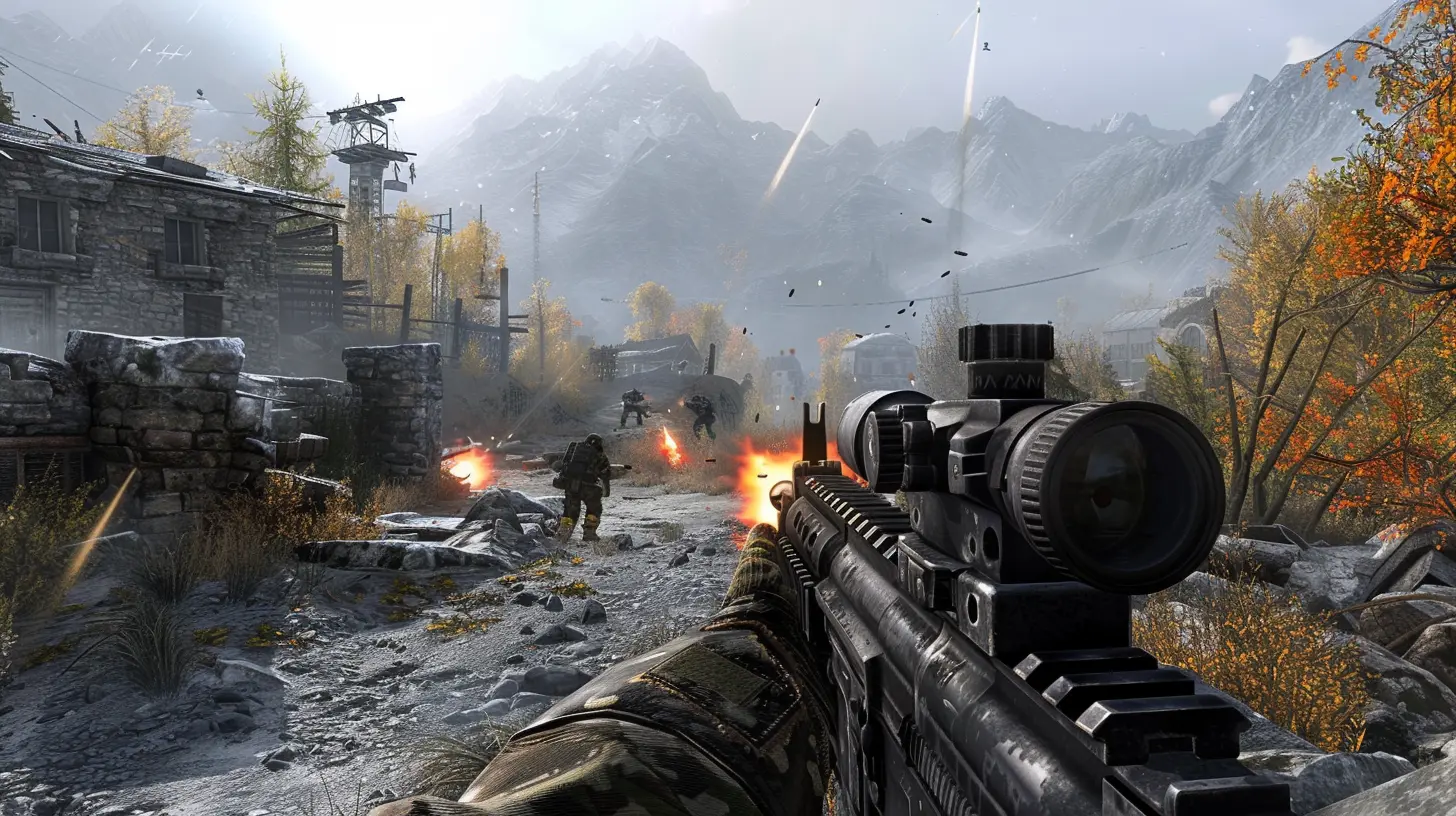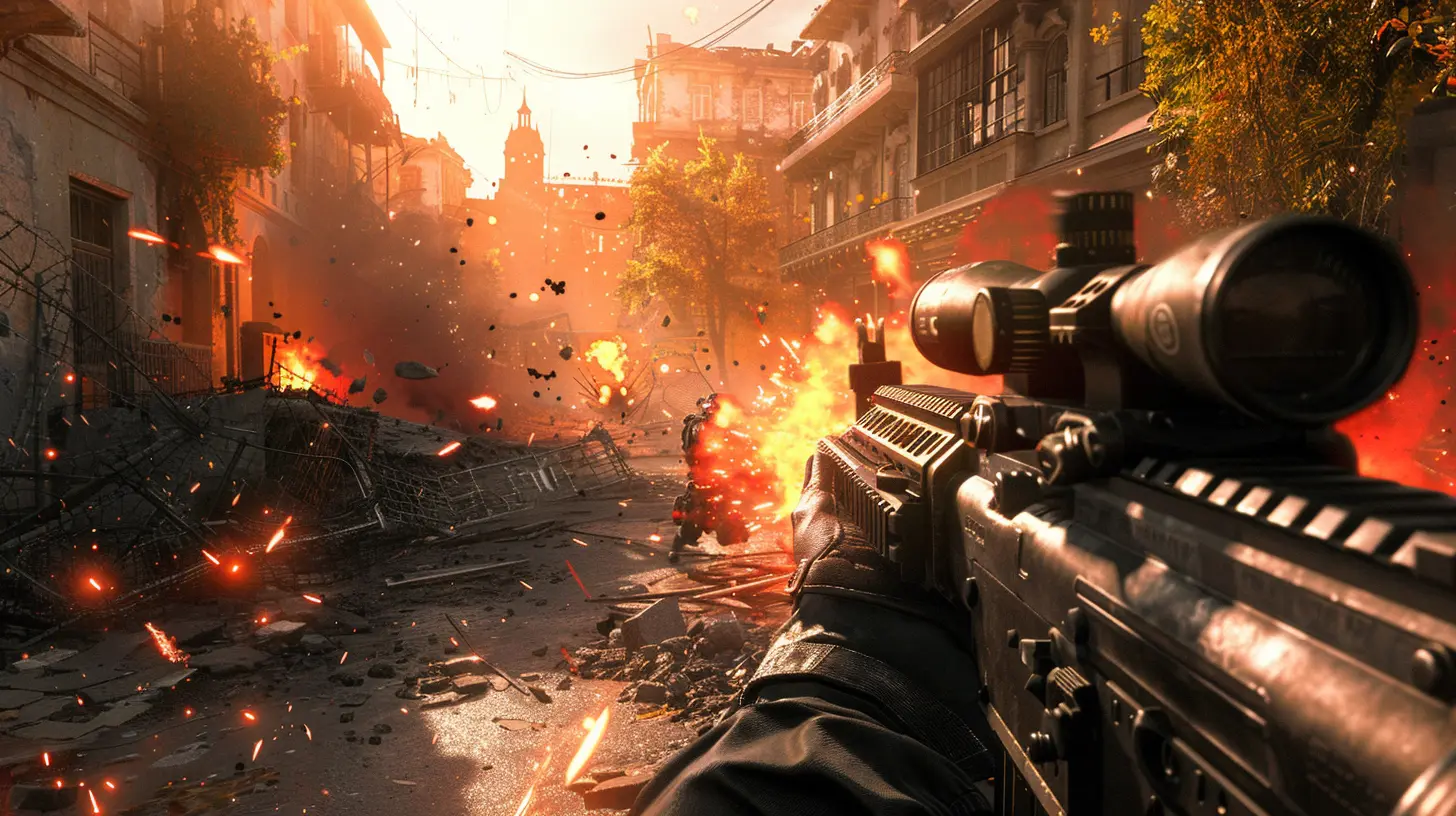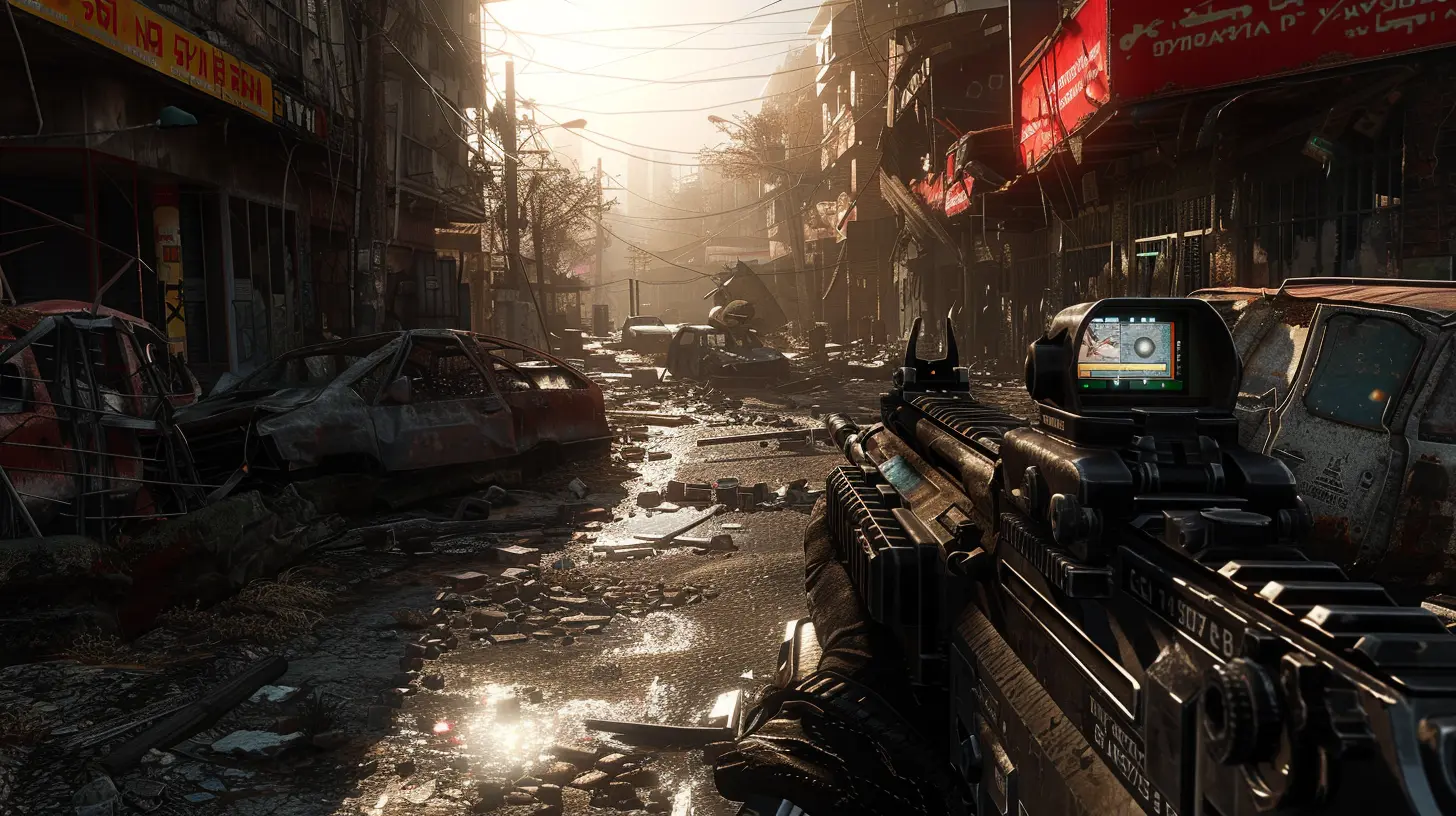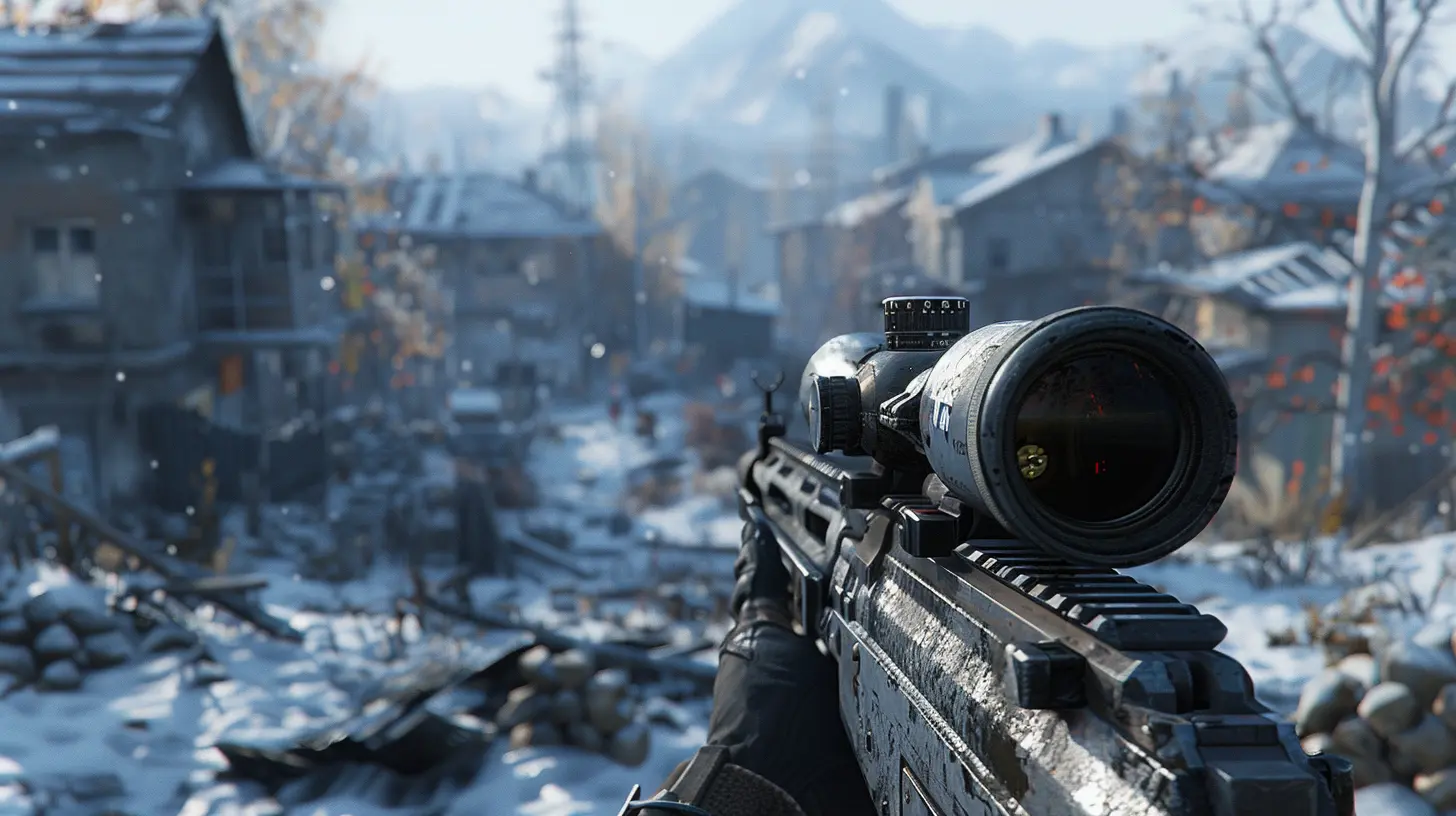The Role of Sound in First-Person Shooter Strategy
17 October 2025
When it comes to first-person shooters (FPS), we often think about precision aiming, lightning-fast reflexes, and tactical decision-making. These are all vital aspects, no doubt. But have you ever stopped to think about how important sound is in your strategy? Yes, sound. Your ears might be just as crucial as your trigger finger when it comes to outplaying the competition.
In the world of FPS games, sound is more than just background noise or explosions for the sake of immersion. It’s a tool, a weapon, and sometimes even a lifesaver. Let’s dive into why sound plays such a pivotal role in FPS strategy and how you can use it to your advantage in your next match.
Why Sound Matters in FPS Games
Think about it for a second—how often have you noticed footsteps creeping up behind you or the faint clink of a grenade landing nearby? These auditory cues are not just there to enhance the atmosphere; they are designed to give you key pieces of information. In many ways, sound is like a sixth sense in FPS games.Unlike visual cues, which can be obstructed by walls, corners, or other objects in the environment, sound gives you a 360-degree awareness. You might not see your opponent, but you can definitely hear them if you’re paying attention. Knowing where your enemy is before they know where you are? That’s half the battle won!
Types of Sounds That Shape Your Strategy
To fully grasp the importance of sound in FPS games, it helps to break down the kinds of sounds you’ll encounter and how they influence your gameplay.1. Footsteps
Footsteps are often the most common and critical sound cues in FPS games. They tell you where people are moving and, more importantly, what direction they’re coming from. If you hear rapid footsteps, someone’s likely sprinting toward you. If they’re slower and quieter, they might be sneaking behind you for a stealthy takedown.Pro players tend to rely heavily on footsteps for positioning. Want to level up your game? Invest in a quality pair of headphones. Trust me, those built-in laptop speakers won’t cut it.
2. Gunfire
Hearing gunfire isn’t just about the chaos of battle; it’s a map-wide alarm system. The unique sound of each weapon can let you know what kind of firepower your enemy has. Is it a sniper rifle? Maybe hold back and avoid open spaces. Is it an SMG? You might stand a better chance in close quarters.The direction and distance of gunfire also give you a heads-up about where the action is happening. If you use this info wisely, you can either join the fight or flank those involved for some sneaky kills.
3. Reloading Sounds
This one’s subtle but highly valuable in tight situations. When you hear an enemy reload, it’s basically an open invitation to push. They’re vulnerable for a split second, and that’s your moment to strike. Silent reloads? That’s a pro move you can learn to avoid giving away your position.4. Environmental Sounds
The environment in FPS games is brimming with audible information—climbing ladders, breaking glass, rustling bushes, even splashing in puddles. These sounds can indicate where enemies are moving or camping. They’re like breadcrumbs leading you to your next target.5. Voice Communications
If in-game voice lines automatically activate in your FPS title (like when an enemy spots you or throws a grenade), use these to your advantage. They can unintentionally tell you the enemy’s position or their next move, exposing their strategy.
Sound Positioning: The Key to Superior Awareness
Now let’s talk about sound positioning, aka why you should ditch your TV’s lousy built-in speakers. Positional audio is a game-changer. It helps you pinpoint where sounds are coming from in a 3D space—left, right, above, below, or even behind you.Surround Sound vs. Stereo
Investing in a headset with surround sound can make all the difference. Surround sound gives you a deeper sense of immersion and lets you pick up sounds you might otherwise miss. Stereo headsets still work fine, but surround sound is a next-level upgrade.Headsets like the HyperX Cloud series or SteelSeries Arctis support directional audio and are highly recommended for their clarity. Let your ears do the heavy lifting, and you’ll notice an immediate improvement in your situational awareness.
The Importance of Volume
Here’s a tip nobody talks about enough: stop blasting your volume! Sure, louder volume can make everything clearer, but it can also drown out subtle sounds like distant gunfire or soft footsteps. Find a balanced volume that highlights these nuances without overwhelming you.
Strategies for Using Sound in FPS Games
Alright, now that we understand why sound matters, how do we actually use it to win? Here are some practical strategies, from basic to advanced, to help you turn audio cues into tactical advantages.1. Play the Patience Game
Sometimes, staying still and just listening is the best move. If you know an enemy’s nearby, go quiet. Let them make the first sound—be it footsteps, reloading, or interacting with the environment—before you act. Patience equals power in FPS games.2. Master the Art of Sound Masking
Smart players will use loud sounds to mask their own movements. For example, firing a gun or triggering an explosion can drown out your footsteps as you reposition or sneak closer. The chaos of battle can be your best cover.3. Communicate with Your Team
If you’re playing a team-based mode, share audio intel. Heard footsteps near a certain area? Call it out. Teamwork is all about pooling resources, and sound is just another resource to share.4. Bait with Sound
This is where things get fun. You can intentionally make noise to lure enemies into a trap. Sprint loudly in one direction, then double back silently while they chase the sound. It’s a classic misdirection tactic, and when done right, it’s both clever and satisfying.5. Stay Alert for Silent Players
Not every opponent will be noisy. Experienced players often use perks or skills to suppress their sound, like “Dead Silence” in Call of Duty. Be wary of these quiet players, as they can surprise you if you’re too focused on overt audio cues.Common Mistakes to Avoid with Sound
As important as sound is, there are pitfalls that players often fall into. Let’s cover a few to make sure you don’t sabotage your own strategy:- Over-relying on Sound: While sound is a vital tool, don’t let it become a crutch. Combine audio cues with visual and map awareness for a complete tactical approach.
- Ignoring Your Own Noise: It’s easy to focus so much on enemy sounds that you forget how much noise you’re making. Keep your movement strategic and minimize unnecessary sounds.
- Playing in a Noisy Environment: If you’re gaming in a room with lots of background noise, you’re putting yourself at a disadvantage. Find a quiet setup to maximize your ability to hear subtle in-game sounds.
Why More FPS Players Should Focus on Sound
The truth is, most casual players don’t pay enough attention to audio cues. They’re too busy focusing on their aim or looking at the minimap. But the pros? They treat sound like a secret weapon. It’s their way of staying one step ahead in a game where every millisecond matters.Imagine losing a gunfight simply because you didn’t hear the enemy sneaking behind you. Or missing an opportunity to ambush someone because you ignored the sound of their reload. Once you realize how much info you’re missing out on, you’ll wonder how you ever played without paying attention to sound.
Conclusion
At the end of the day, FPS games are as much about strategy as they are about speed and precision. And sound? It’s a cornerstone of that strategy. From pinpointing enemy locations to timing your attacks, mastering the auditory side of FPS gameplay can elevate you from an average player to a skilled tactician.So, next time you boot up your favorite FPS game, take a minute to listen closely. Tune into every footstep, gunshot, and environmental clue. Your ears might just become your new favorite weapon.
all images in this post were generated using AI tools
Category:
First Person ShooterAuthor:

Tina Fisher
Discussion
rate this article
1 comments
Keira Wilkins
Sound design plays a crucial role in first-person shooters, enhancing gameplay by providing critical audio cues for enemy movements, environmental changes, and weapon effects. It not only immerses players in the experience but also informs strategic decisions, influencing overall performance and enjoyment.
October 17, 2025 at 2:53 PM

Tina Fisher
Absolutely! Sound design is essential in FPS games, as it enhances immersion and provides vital information, shaping both strategy and gameplay enjoyment.


